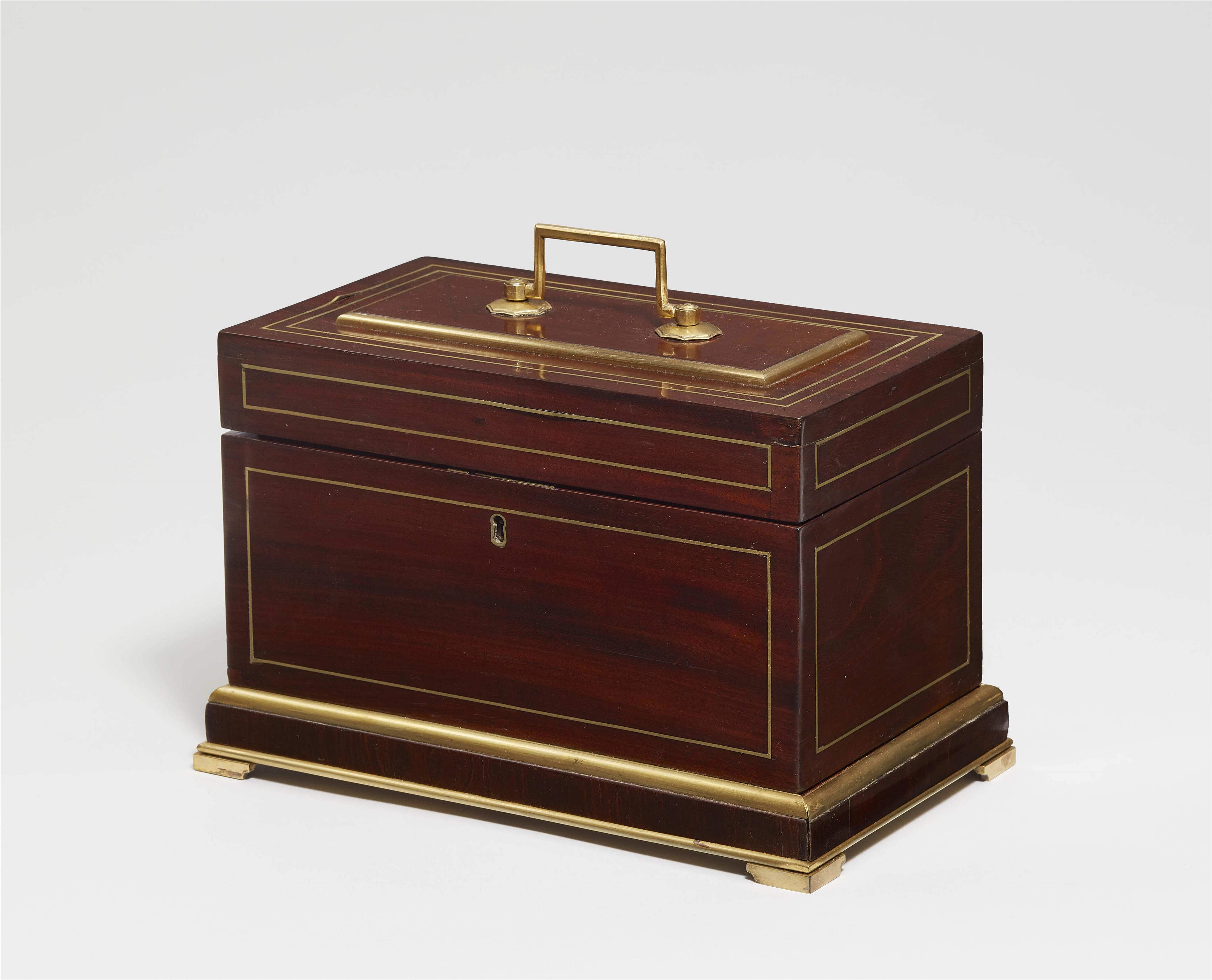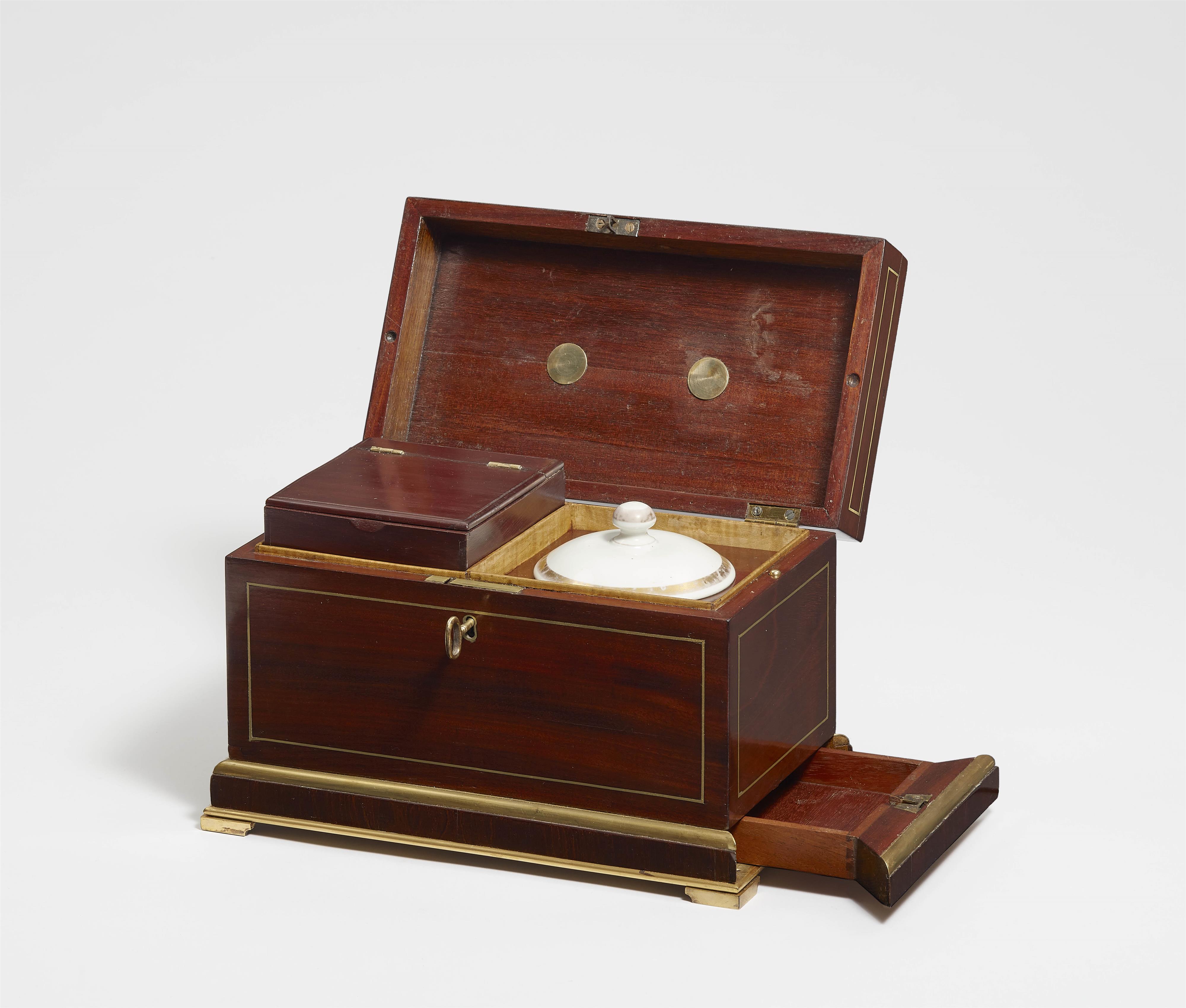A tea caddy by David Roentgen
Mahogany veneer on mahogany corpus, brass mountings, oak, paper lining, porcelain. Oblong box with a hinged lid surmounted by a folding handle. Decorated throughout with horizontal bands of veneer with brass borders. The protruding base resting on four curved bracket feet. The interior fitted with a tea caddy on the left and a round porcelain box on the right. With a shallow secret drawer in the right that can be opened via a round button in the right side of the box. One brass border on the left side of the lid and one on the front centre slightly lifted. H with handle folded down 18, W 26, D 15.5 cm.
Neuwied, 1785 - 1790.
Masterpieces in miniature
Boxes by Abraham Roentgen
The production of boxes probably formed part of Abraham Roentgen's day to day work since the founding of the workshop in Herrnhaag in 1742. He first encountered these kinds of elegant boxes veneered with precious woods during his travels to the Netherlands and London. In England, boxes like this were often used to house tea, which was imported at great expense from India and China, in lockable pewter-lined containers. They were called caddies, a word which derives from the Chinese unit of measurement “catty”. Abraham Roentgen modified the form and function of this colonial box form, thus creating a distinctive and eye-catching design even for his smallest products.
Minute, perfectly aligned slivers of veneer were applied to a corpus of cherry or oak. Brass stringing accentuated the contours, gilt bronze feet and delicate inlays enhanced the effect of a masterpiece in miniature form. The shallow drawers at the base of the boxes which sprung out by pushing a button in the interior became something of a trademark of these designs, as well as the small square doors covering the lockplates, which opened to reveal the keyhole when a button in the base of the box was pressed. Produced in series, each box had its own unique furnishings and features, such as the small engraved brass cartouche on the lid. The boxes were produced in varying sizes and were not intended exclusively for tea, but for any valuable contents.
Only around 100 of these precious boxes survive today, the majority of which are in the form of small tea caddies. Until the lottery held in Hamburg in 1769, these boxes were reserved exclusively for the highest among Roentgen's aristocratic customers. Only the tax levied on tea from the late 1760s onward and the change in tastes towards Neoclassicism reduced the demand for such sumptuously produced boxes.
Literature
Cf. Fabian, Abraham und David Roentgen. Das noch aufgefundene Gesamtwerk ihrer Möbel- und Uhrenkunst in Verbindung mit der Uhrmacherfamilie Kinzing in Neuwied. Leben und Werk, Verzeichnis der Werke, Quellen, Bad Neustadt 1996, no. 583.




